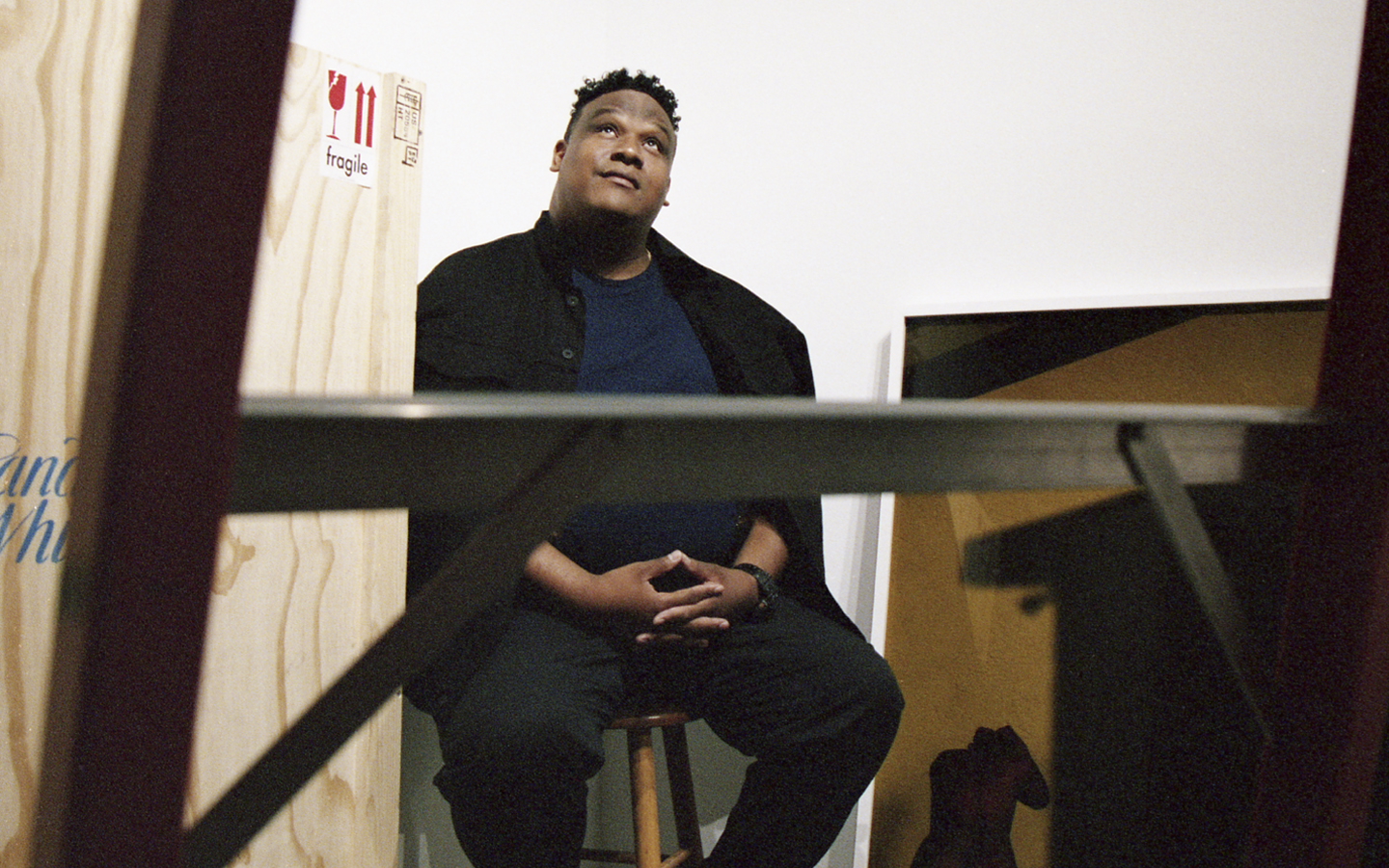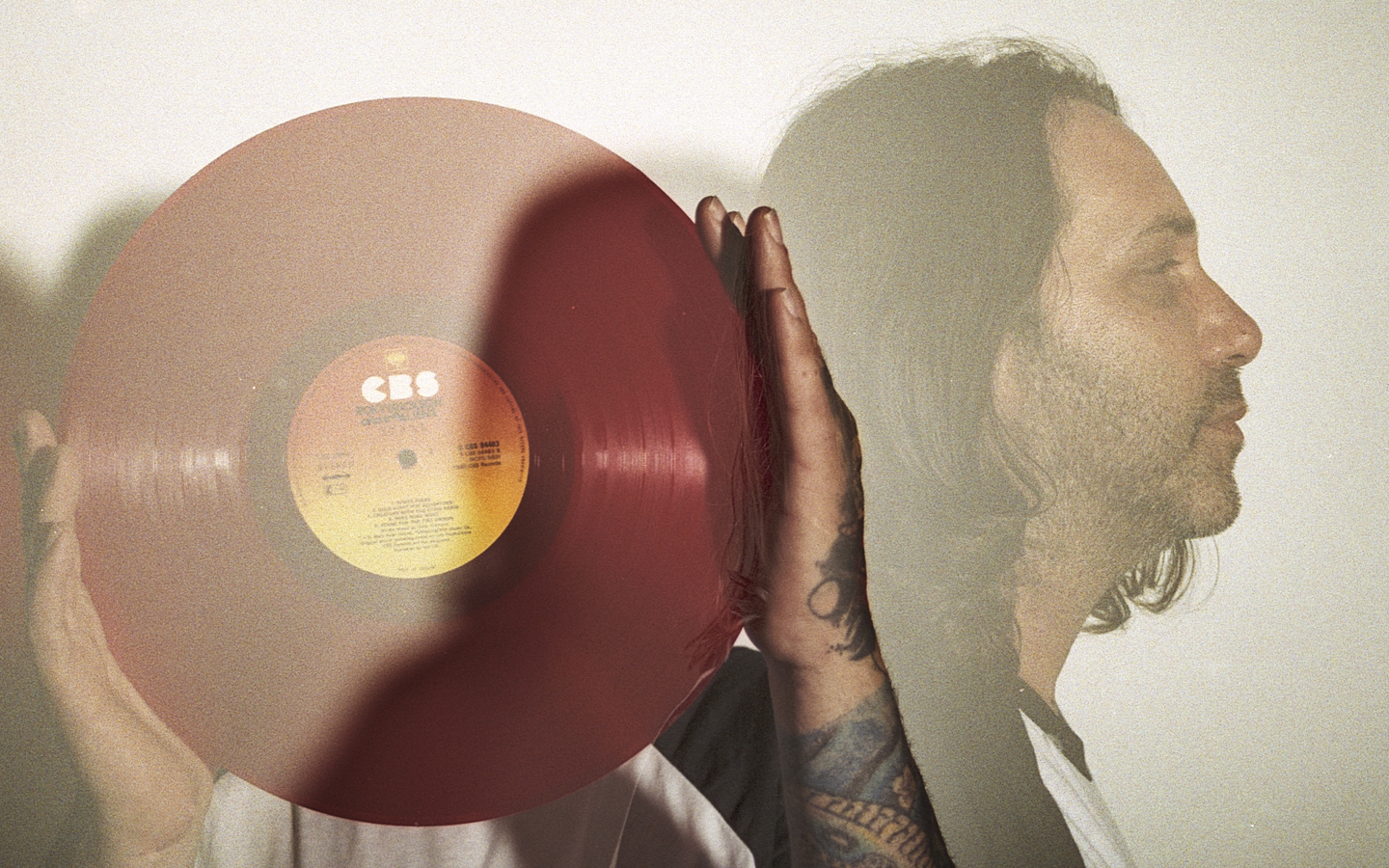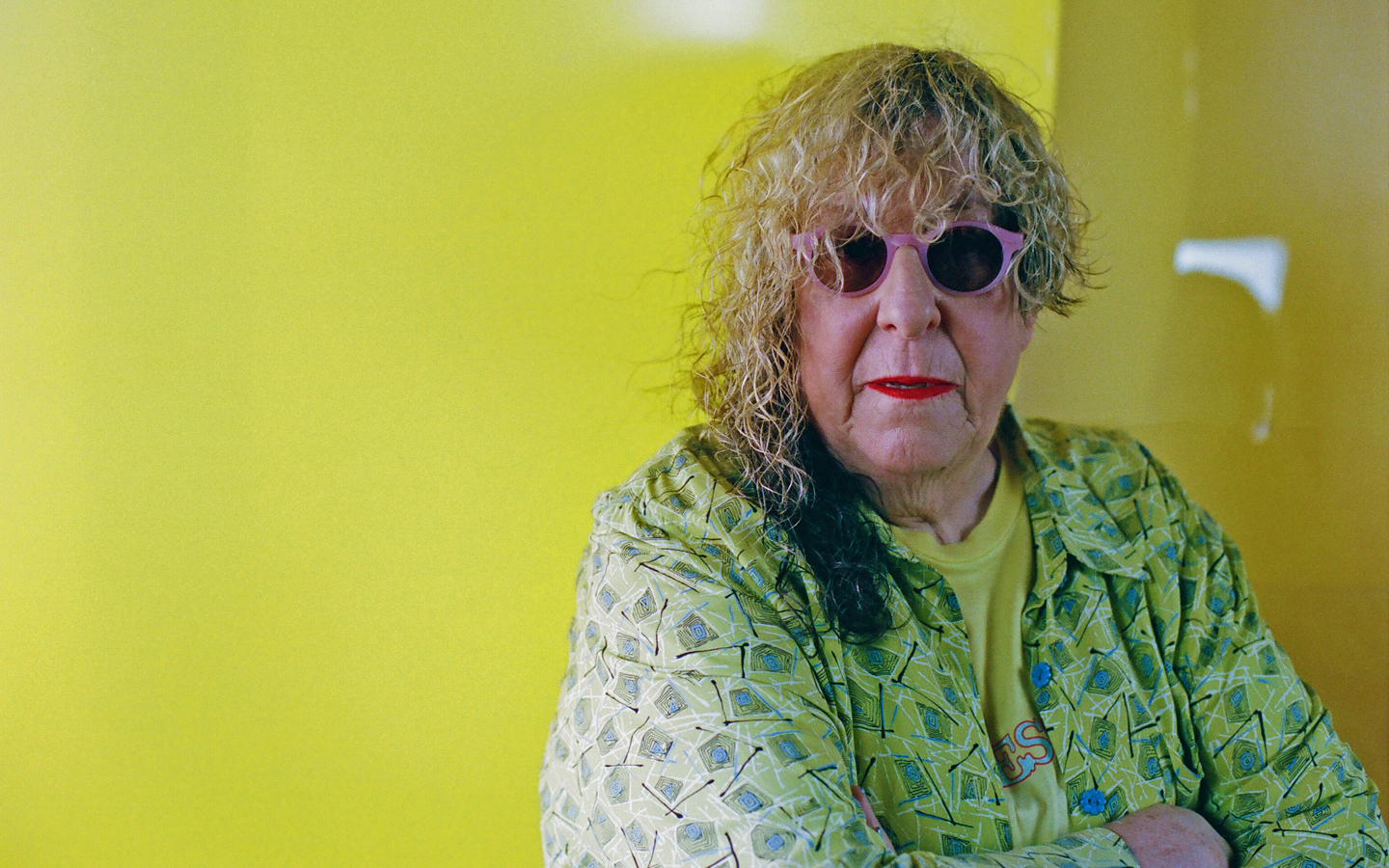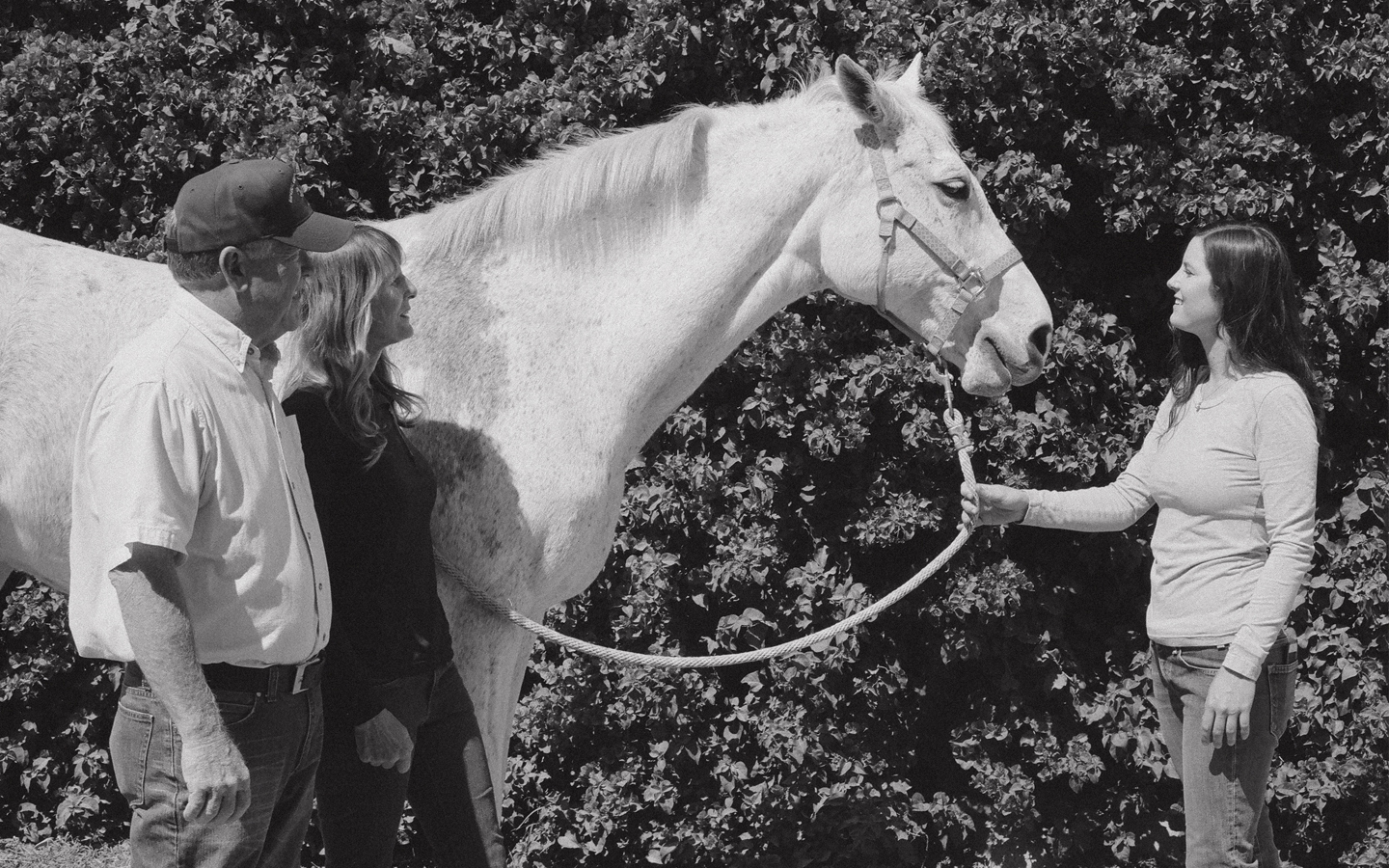
Rick Garzon of Residency
TEXT ALEX KOZELA
VISUAL JEFF LEAVITT
Rick Garzon is dressed smartly in a true blue t-shirt with black suspenders and black slacks on Queen Street in Downtown Inglewood. Jumbo jets roar overhead, cutting through the familiar music. His smile exudes warmth, here in his place.
“I’m from Inglewood,” he says. “Born and raised, been here all my life.”
He sits comfortably in the roughly 800-square-foot space. Around him, on the walls, are the stories that surround LA. His LA. His community’s LA. An LA that often gets overlooked.
Behind him is the work of queer skateboard artist Jeffrey Chung, three nude figures playfully sharing a moment of abstract intimacy. Before him stands Ashley Teamer’s dynamic, universalist take on WNBA playing cards with her trilogy of Shannon Johnson, Natalie Williams, and Cynthia Cooper. The south wall is draped with Adee Robinson’s topographic landscape, a bird’s eye view of a far-off home.
We’re sitting in his Residency Gallery, and the stories on display form Mappings, an exhibition curated by Essence Harden that celebrates the acknowledgment, and subsequent creation, of space. It’s one of many shows, programs, and events that take place here, binding the neighborhood together. As Inglewood evolves, its history is rooted here in the gallery.
“I moved to New York and other places for a short period of time,” says Rick, who explains that he returned West because his Brooklyn rent doubled. “I soaked up a lot of culture everywhere I went and realized that I really don’t do too much in Inglewood—you know, I live here, but that’s about it—so I decided I wanted to open up a business in my own neighborhood.”
He’s always gravitated toward art, starting out as a collector and honing his relationship-building skills along the way through a sales and advertising background. His love of self-expression comes from a deeply rooted sense of family, informing his mission to show creations that speak to him in a space where they are allowed to live and breathe.
Garzon’s scrappy entrepreneurial style suits the nature of Inglewood and is a welcome reflector of the creativity seeping through this neighborhood every single day. Inglewood is proud, he says, “from our public schools to pro sports.” And in an ever-changing landscape, it’s something to hold on to.
“You have art that is meant for a multicultural audience, but it doesn’t get shown, so I figured why not have something in my own neighborhood? So that was that.”
He had the idea while he was still living out on the East Coast, visiting local galleries in Brooklyn, and developing an interest to showcase work from artists immersed in undergrad, graduate, or MFA programs.
“I felt like that’s more of the stronger work coming out right now,” Rick says. “I kind of wanted to stay away from the Pop art aspect just a little bit. I really wanted to focus on stories that were being told coming out of these schools.”
As he sits here today, in his gallery, he says that finding his voice, forging his own lane, and taking action is what let him to execute this vision for the people in his community—allowing them to use their voices in a space meant for them.
“The driving force was coming back to LA and just not getting the respect going into a space that’s not in my neighborhood, or even waiting to be acknowledged when you go into a space. It’s kinda weird—of course, you see me, 6’3”, huge dude—when you see me in a space like that, you kind of wonder, ‘What is he doing here? Did he just wander off the street?’ And I’m usually dressed the way I am.”
“I’ve been to a few spaces where they ask if I’m in the right place, and I’m just like ‘Yeah, I follow the artist, I think the artist is dope, I’m interested in a piece if you have any available,’ and usually it’s just, ‘No, we don’t have anything available.’”
//
It’s no secret that Inglewood is changing—as a community and as a city.
The Crenshaw/LAX Metro line will soon cut through it, and massive development projects like the Forum, the new NFL stadium, and perhaps a Clippers arena all signal a new era here. The Residency Gallery, through participating in the annual Inglewood Open Studios and putting on shows like 1992: An Examination of the Iconography from the ‘92 Los Angeles Rebellion, Model Migration, and Barrio Logos: Displacement and Vanishing Iconography, has done its part in preserving the culture and implementing art as an empathetic, coalescive tool.
“Inglewood has a very rich art community that nobody really knows about,” Rick says. “Artists have been living here for twenty, twenty-five, thirty years, and nobody really knows about that. The residents really don’t know about it. Why not bring it to the forefront?”
The bold voices shown here include trans photographer Texas Isaiah and queer multimedia artist David Antonio Cruz, whose works have brought potentially taboo community issues to light. Garzon encourages dialogue in this space and holds regular artist talks that bring online discussions to life, creating a face-to-face opportunity for learning and teaching that focuses on conversation and solutions rather than digital noise.
“I feel like art has the responsibility to be relatable,” Garzon says. “I really feel like these artists—talking about these social justice issues—they can create the work that can relate to the person that doesn’t get to have a conversation about this, or the person that doesn’t know how to vocalize themselves. All of the artists I show here, I really want them to have a community reflection. I want people who come in here who are from the community to see themselves in the work.”
He believes that artists have a responsibility to show the audience who the art is intended for, which is what sets Residency apart from bigger, more highly funded galleries. It’s a platform that exists to project local voices on a different level.
“You don’t have to put a face on when you’re here. And that’s what I strive for. That’s the vibe. When you come in, you hear music that you’re familiar with, you see yourself in the pieces, you see work that you’re familiar with. What I strive to have here is more of a family neighborhood vibe.”
He remembers walking into a Genevieve Gaignard installation at the SPRING/BREAK Art Show a few years back in New York. Her installations reflect the black experience in nostalgic, time-bending ways that transcend race, gender, and class. Rick walked in with his friend as she put a Michael Jackson 45 record on. They began to dance.
“It really struck a chord with me and my friend, because we walked into this familiar space. You had the couch with the plastic on it—everybody had a couch with the plastic on it, you know? You had all this black memorabilia. It really felt like something I grew up with, especially hearing Michael Jackson in the background on the 45, and so he and I were just dancing and vibing out with [Gaignard] and her mother. And then you had these other people walking in behind us who just did not understand it, who were looking at us kind of funny—like, ‘This is an art installation, this is not a party.’
“And that’s what I feel like happens here. There’s a different environment when you see pieces from artists of color here than when you see it somewhere else—and I hear it all the time, that it’s surprising and refreshing. At our openings we have DJs, we have food trucks, we usually get about 150 to 300 people here, all at once, so they’re packed out on the street. Police always come by to see what we’re doing. It’s not totally a party vibe, but it’s really a different vibe when you come here.”
He says that making as many community ties as possible and banding together with other like-minded individuals is key to getting started on a project such as this one. Don’t quit your day job. Get in touch with the Chamber of Commerce. Attend Business Council meetings. Get your name out there through social media—Instagram is great to allow people to get a feel for the work. But actually having the space is the game changer.
“It’s very important to have a space,” Rick says. “It’s very important to have somewhere where somebody can come and talk to you, and have that relationship, and view the work. When you show work online, when you show it through email, it doesn’t do the same justice as actually viewing the work, so I really feel like having a brick and mortar physical space is very, very important.”
“It’s always the Master P philosophy, you know? I love it. If you can’t break your way into these big houses—if your work isn’t being shown to get broken into these big houses—then make your own house.”
Images in this article feature artwork created by Adee Roberson (adeeroberson.com) and Texas Isaiah (kingtexas.net). Wallet insert portraits were shot in a 35mm analog photobooth installed by SOVO// Magazine outside the opening of Mappings, an exhibition curated by Essence Harden, as a way to document the community that has gathered in support of Residency.




